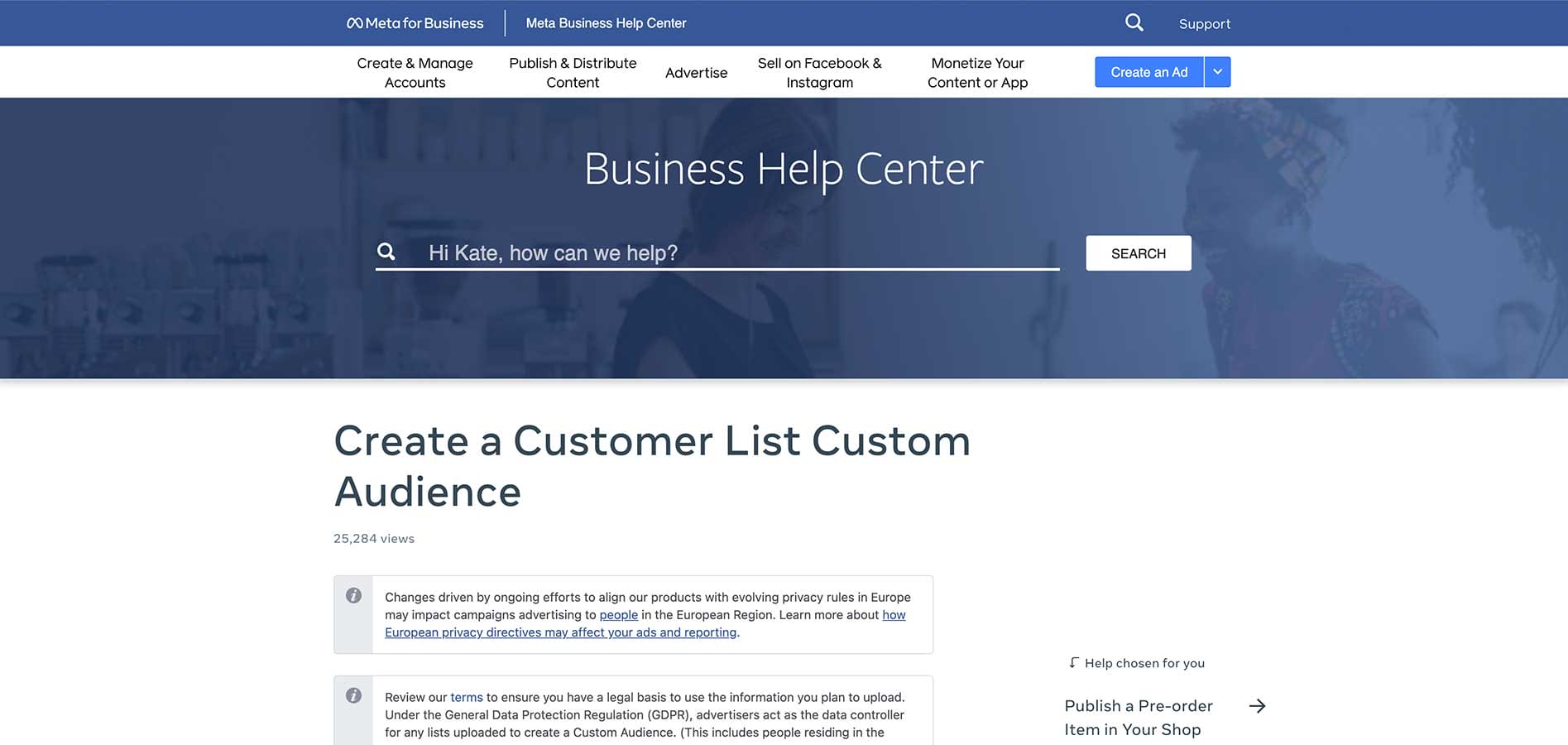Now that 2022 is FINALLY HERE—that last one took way too long—it’s time to revisit and revitalize our social media marketing strategy. Most of us spent much of 2021 limping our pages along, posting curbside and closure announcements and trying to throw a cute puppy picture in there somewhere. But it’s time to shake it off, put on a new pair of scrubs, and stride a little more confidently into the new year with an improved social media marketing strategy.
5 ways to make your veterinary social media work smarter, not harder, in 2022
Action 1: Review your 2021 insights
I know it’s nobody’s idea of a fun time to sit down and look at a bunch of graphs and analytics, but spending an hour or less reviewing what worked and what didn’t will be invaluable to your 2022 social media marketing strategy.
Focus on your key one or two platforms, and keep your “why” top of mind. Why is your veterinary practice using social media? What were the goals for 2021? (It’s OK if the goal was just to keep the page running…we kinda had some other stuff goin’ on.)

Not sure where to start? Check to see if you gained new followers and if your posts, in general, had more than a handful of likes.
You’ll be able to get the most comprehensive year overview using Facebook’s Business Suite (you’ll be limited to the last 28 days on Facebook alone). This is also a great place to look if your practice also uses Instagram, so you can look at both platforms at once. Click here to go to Facebook’s Business Suite, and adjust your date range to get a snapshot view.
I’d recommend spending some time with the content tab on the main insights page. You can toggle between the options to see your top posts for the year based on likes, comments, shares, and page links. This will reveal the content that truly resonated best with your audience, and what drove traffic away from Facebook and to your website/appointment booking link, etc.
Action 2: Consider two surveys
Now that you have an idea of the content that performed well in 2021, it’s time to focus on what will perform well in 2022.
One of the best investments of time and energy is to ask your clients—ideally your ideal clients—what they want to see from you:
- What platforms are your clients using?
- What kinds of posts slow their scroll?
- Do they want to see more patient photos, educational articles, team photos, behind the scenes, case stories, or cat memes?
The results might surprise you, and are often different at each veterinary practice.
Create a simple Jotform or Google form with five questions and send it via email, text, or push notification to your top clients. Offer to draw a random winner from those who complete the form, or apply a free nail trim or ear cleaning credit to everyone’s next visit, and you’ll quickly end up with a treasure trove of information.

The next survey is even easier: ASK. YOUR. STAFF. All of them, not just the medical team. Everyone on the veterinary team has an opinion that matters here, because these are the people who are answering client questions every day and are in the best position to spread information about pet health and your clinic to their broader, personal networks.
Want employees to share your content on their own feeds? Use topics that involve them or were their idea. In addition, your team has from-the-trenches insight on the questions your clients are asking—what do they need more information about? What do they need to understand so they’re better prepared for their pet’s visit and care? And best of all, could creating a blog, video, or infographic about those key topics save your team time?
We tried this at my veterinary practice several years ago (it’s now an annual request), and I was stunned: My team told me they were constantly explaining bordetella. Our clients didn’t understand what it was, why they needed it, and how we vaccinated their pets for it. We realized that, as a practice, we’d been explaining bordetella, but our client base—an urban demographic that frequented dog parks, kennels, training, day care, and boarding—only heard the term “kennel cough” as the name for the vaccine.
We created a video and blog about the topic, and when receptionists got that question, they could quickly say, “We have a blog and a video I could send you that has all the information from our doctors. Would one of those be helpful?”
This instantly saved our veterinary team tons of time, and it increased our engagement on social media.
Action 3: Get to work on your audience
So much of veterinary marketing time is spent trying to earn new clients, but we all know the value often lies with our existing clientele (not to mention many veterinary practices aren’t taking new clients right now). Ensure your content is being seen by YOUR clients. There are technically two ideas in this action step, but doing just one can seriously boost your follows and engagement numbers:
- Send an email to let them know where to connect with your practice online — This is a great place to include not only your social media channels, but your online reputation and review sources as well. For instance: We’d love to connect with you and your pet beyond the exam room walls. We’re here for you both as a source of great, trusted pet health information and a source of undeniably cute four-legged creatures. Please follow us wherever you do social, and consider leaving your feedback for us on any review site. You can find us on Facebook and Instagram <HYPERLINK YOUR PAGES> @Anytownvet, and share your feedback with us on Google, Yelp, and Nextdoor <HYPERLINK YOUR PAGES>. Don’t forget to tag your pet’s photos during their visits with us for a chance to be featured on one of our next social media posts!
- Export and upload your client email list to your Facebook page — Create a custom audience in Facebook (instructions here) by exporting your list from your PIMS. This allows your Facebook and Instagram boosts and ads to target your veterinary clients (assuming they use the same email they gave your practice for their social logins), rather than targeting based on people in your area. You can target them with unique content just for people who already know, like, and trust your veterinary practice, so you can continue to build that relationship and demonstrate the value your practice brings.

Action 4: Bust out some cold, hard cash
If you’re not spending any money on social media, you’re unlikely to have great success meeting your business-driving goals. Facebook and Instagram algorithms prioritize pages that invest in boosts, ads, and promoted posts, and doing so (even at a low amount) unlocks the potential to target your audience. Otherwise, your content enters the mix with everything else anyone is posting, and you at best reach 30% of your audience—and some of those audience members might be people who have moved away from your practice, who aren’t great clients anyway, or who follow your page but won’t actually bring their pet into the practice (like your aunt in Boise who follows your Arizona-based practice because she loves you).
Investing in a few boosts per week and an ad or two each month will help your practice be more strategic, connect with the RIGHT clients, and reach your marketing goals.
Action 5: Add some fun
Don’t forget that one of the best ways to connect with clients—or anyone, frankly—is to be yourself and form some common ground.
I’ve always found that cat memes are universally appealing, but you and your clientele may have a different common interest. Don’t be afraid to be funny, even if the content’s a little edgy. If it’s something you enjoy, your best clients—and those you want to attract—will probably enjoy it as well.
Fun content is also often free content, so share that meme, post that picture of the doctor with anal glands all over their face (we all know it’s happened), or try that latest TikTok dance at your next team meeting. Your clients will love it, your engagement will increase, and I bet you’ll laugh a little bit, too. Doesn’t 2022 need some more of that?

Social media is often harder than we give it credit for. It can take a lot of time and energy to execute—and even more to execute it well. Ensure your efforts are paying off and that the marketing you’re doing is helping your practice accomplish its goals. Following these action steps and doing a quick review in Q2 can help ensure you’re on the right path and course correct if needed.
Bonus: Vet2Pet customers have access to pre-written social media posts to help save time and inspire ideas. Not a Vet2Pet customer? Sign up for a demo to find out how the platform can help with your marketing and client engagement needs. Happy posting!



